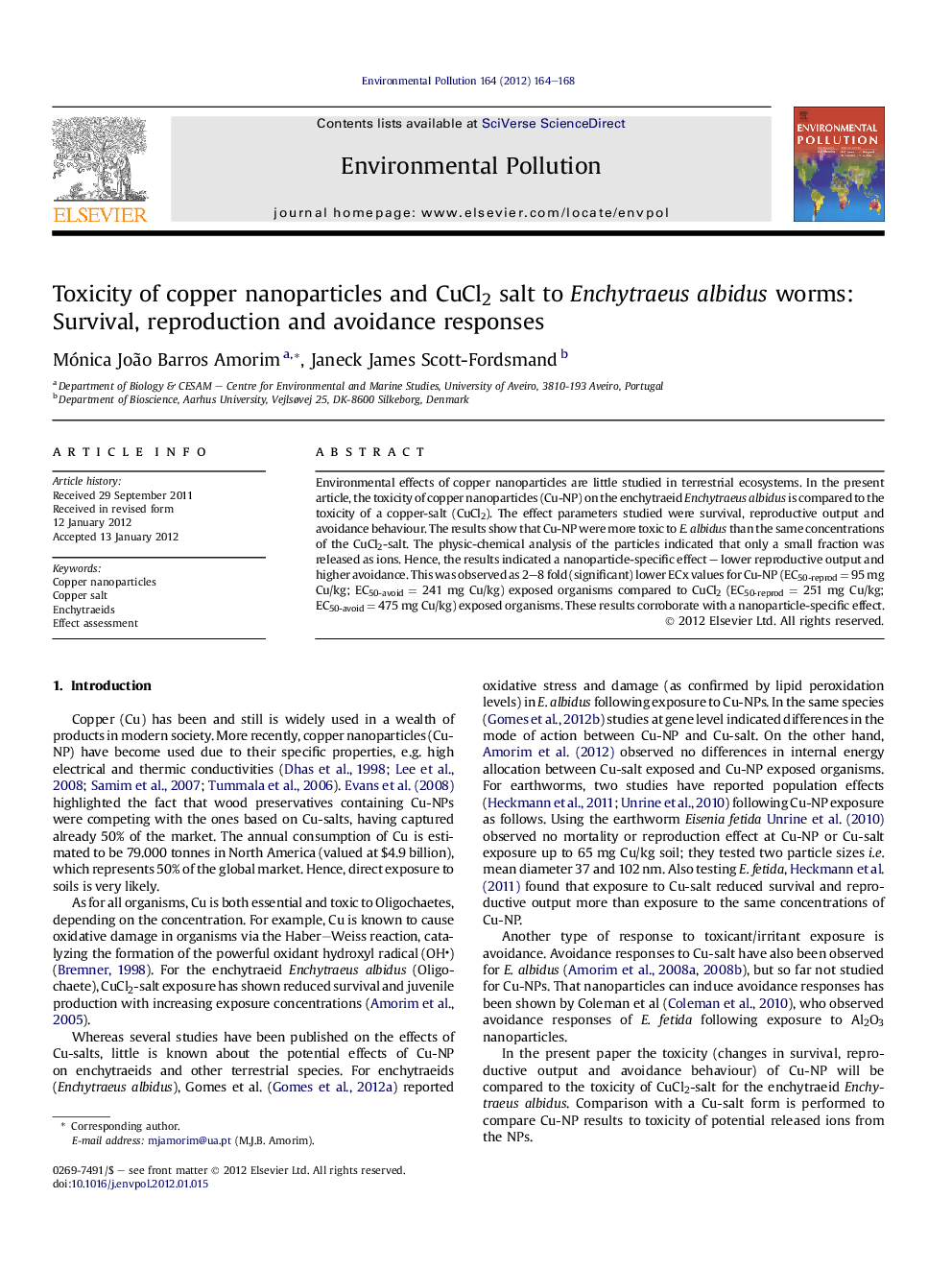| Article ID | Journal | Published Year | Pages | File Type |
|---|---|---|---|---|
| 4425072 | Environmental Pollution | 2012 | 5 Pages |
Environmental effects of copper nanoparticles are little studied in terrestrial ecosystems. In the present article, the toxicity of copper nanoparticles (Cu-NP) on the enchytraeid Enchytraeus albidus is compared to the toxicity of a copper-salt (CuCl2). The effect parameters studied were survival, reproductive output and avoidance behaviour. The results show that Cu-NP were more toxic to E. albidus than the same concentrations of the CuCl2-salt. The physic-chemical analysis of the particles indicated that only a small fraction was released as ions. Hence, the results indicated a nanoparticle-specific effect – lower reproductive output and higher avoidance. This was observed as 2–8 fold (significant) lower ECx values for Cu-NP (EC50-reprod = 95 mg Cu/kg; EC50-avoid = 241 mg Cu/kg) exposed organisms compared to CuCl2 (EC50-reprod = 251 mg Cu/kg; EC50-avoid = 475 mg Cu/kg) exposed organisms. These results corroborate with a nanoparticle-specific effect.
► Enchytraeus albidus were exposed to Cu-salt and Cu nanoparticles (80 nm) in soil. ► Survival, reproduction and avoidance behaviour were assessed. ► Particles characterization indicated very small ion release. ► Cu nanoparticles toxicity was higher than Cu-salt for reproduction and avoidance.
